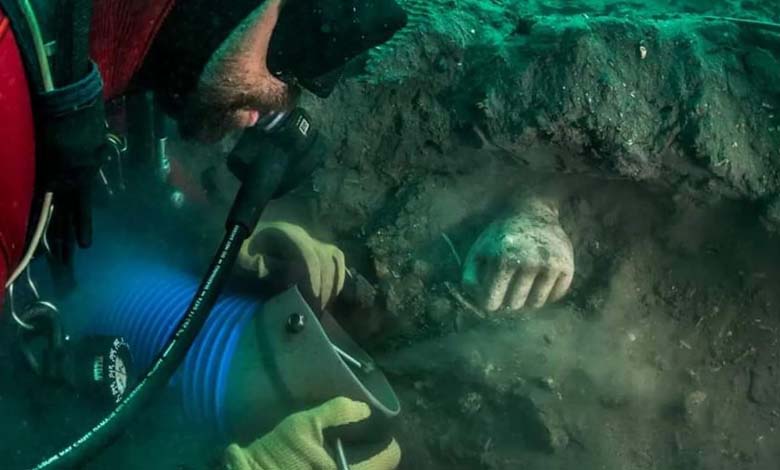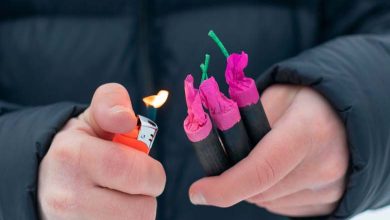Images reveal important underwater archaeological discovery in Alexandria

Egyptian authorities announced today, Tuesday, the discovery of an archaeological treasure, represented by a temple of the goddess Aphrodite from the 5th century BC, and a number of artifacts related to the temple of Amun Gereb, during underwater excavations in the submerged city of Tunis Heraclion in the Abu Qir Gulf in Alexandria.
The treasure was uncovered by the joint Egyptian-French archaeological mission, between the Egyptian Supreme Council of Antiquities and the European Institute of Underwater Archaeology, inside the temple, which included Bronze and imported ceramic utensils from Greece, in addition to the remains of buildings supported by wooden beams dating back to the 5th century BC, according to the Ministry of Tourism and Antiquities.
The Director-General of Underwater Antiquities at the Ministry of Tourism and Antiquities, Islam Salim, said that “The submerged city of Tunis Heraclion dates back to the 8th century BC and is located 7 kilometers from the coast of Abu Qir. It was considered Egypt’s largest port on the Mediterranean coast before Alexander the Great founded the city of Alexandria in 331 BC.”
Salim revealed more information, saying:
-
Discovery of an Ancient Trading Center in Cyprus… and a Precious Treasure in Tombs
- Earthquakes that struck the country in ancient times caused the complete submersion of the city under the sea, and it was rediscovered in 2000.
- In addition to the Aphrodite temple discovered today, the city contains a temple for Isis and a temple for Hercules, which is why the city is named after them.
- Before the arrival of Alexander the Great, this area was the link between Europe and Asia, as it was Egypt’s largest port at the time at the end of the Canopus branch, one of the seven branches of the Nile at that time.
- The port was located at the junction of the Canopus branch with the Mediterranean Sea, and boats would come from Europe in the Mediterranean and enter the Nile through the Canopus branch, reaching as far as Qift in Qena. Goods were then transported by animals to boats in the Red Sea to travel to Asia and East Africa.
- Due to the strategic location in the Abu Qir Gulf, the area is rich in temples and antiquities that have not yet been discovered.
- The excavation of underwater antiquities in that area began in 2000, and every year we make new discoveries because the research equipment evolves each year and helps us reach more discoveries.
- We have found 73 boat wrecks in the same area so far, and we have also found buildings, temple walls, and port docks. The area has not yet revealed all its secrets and treasures.












